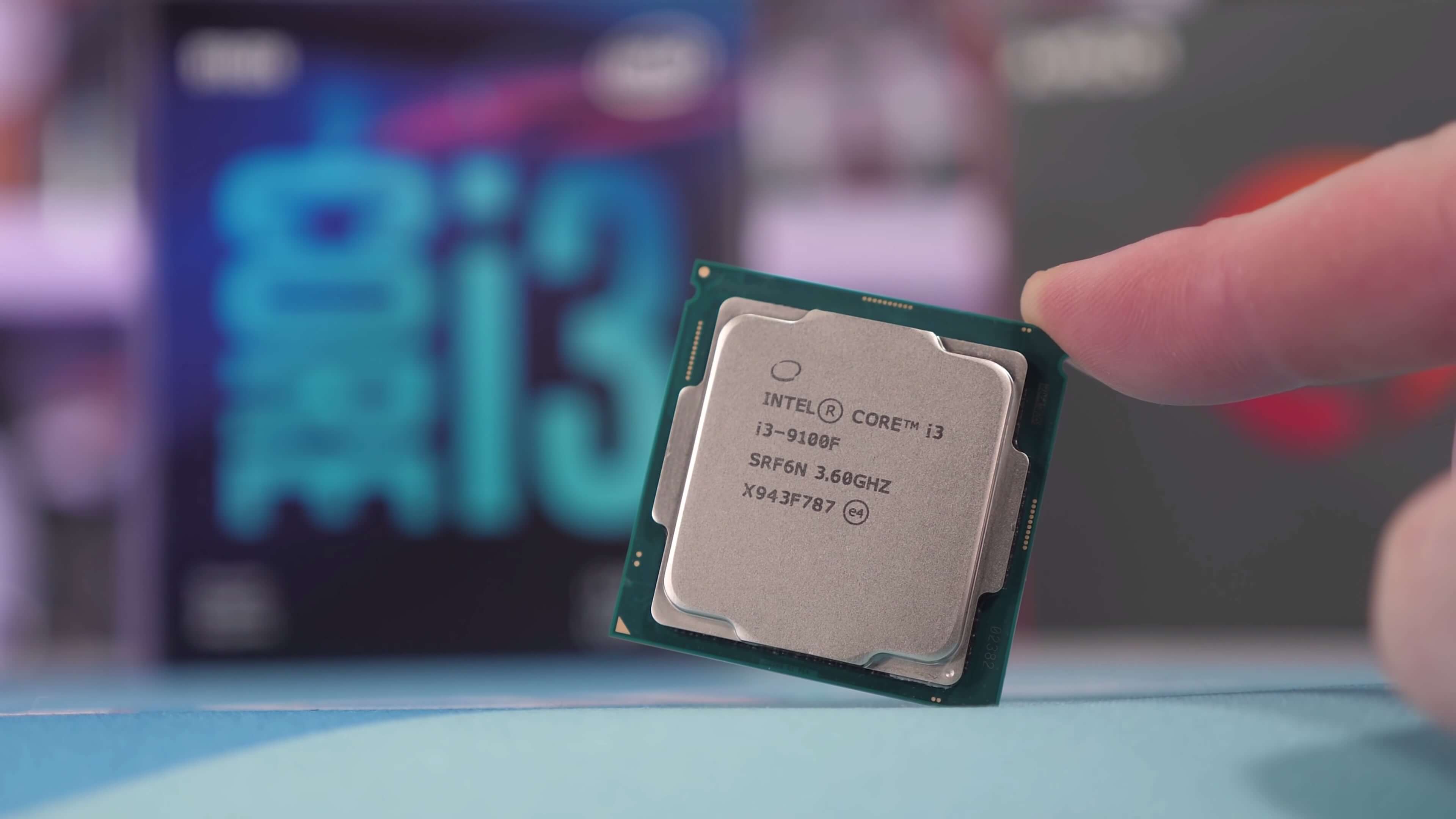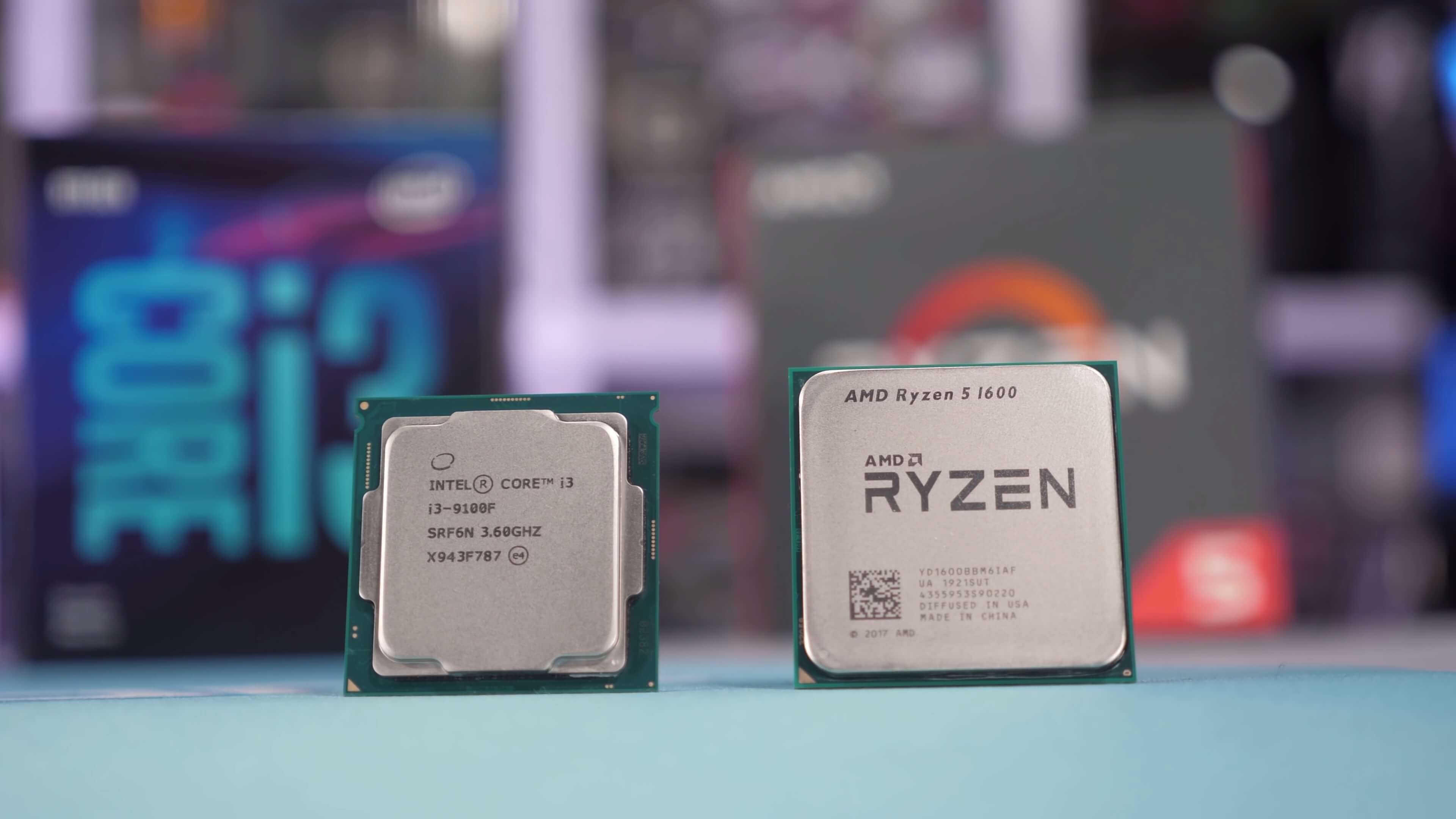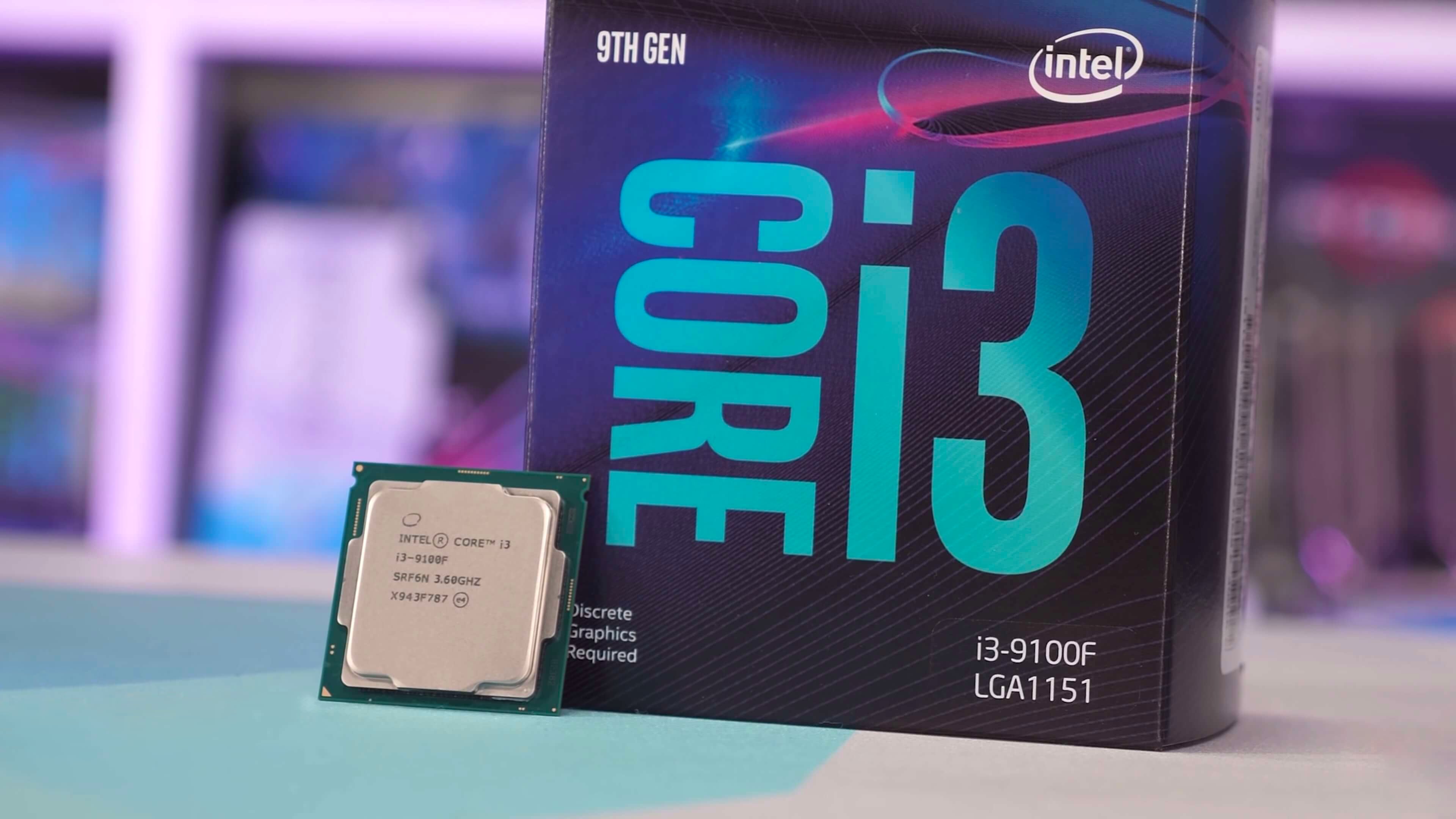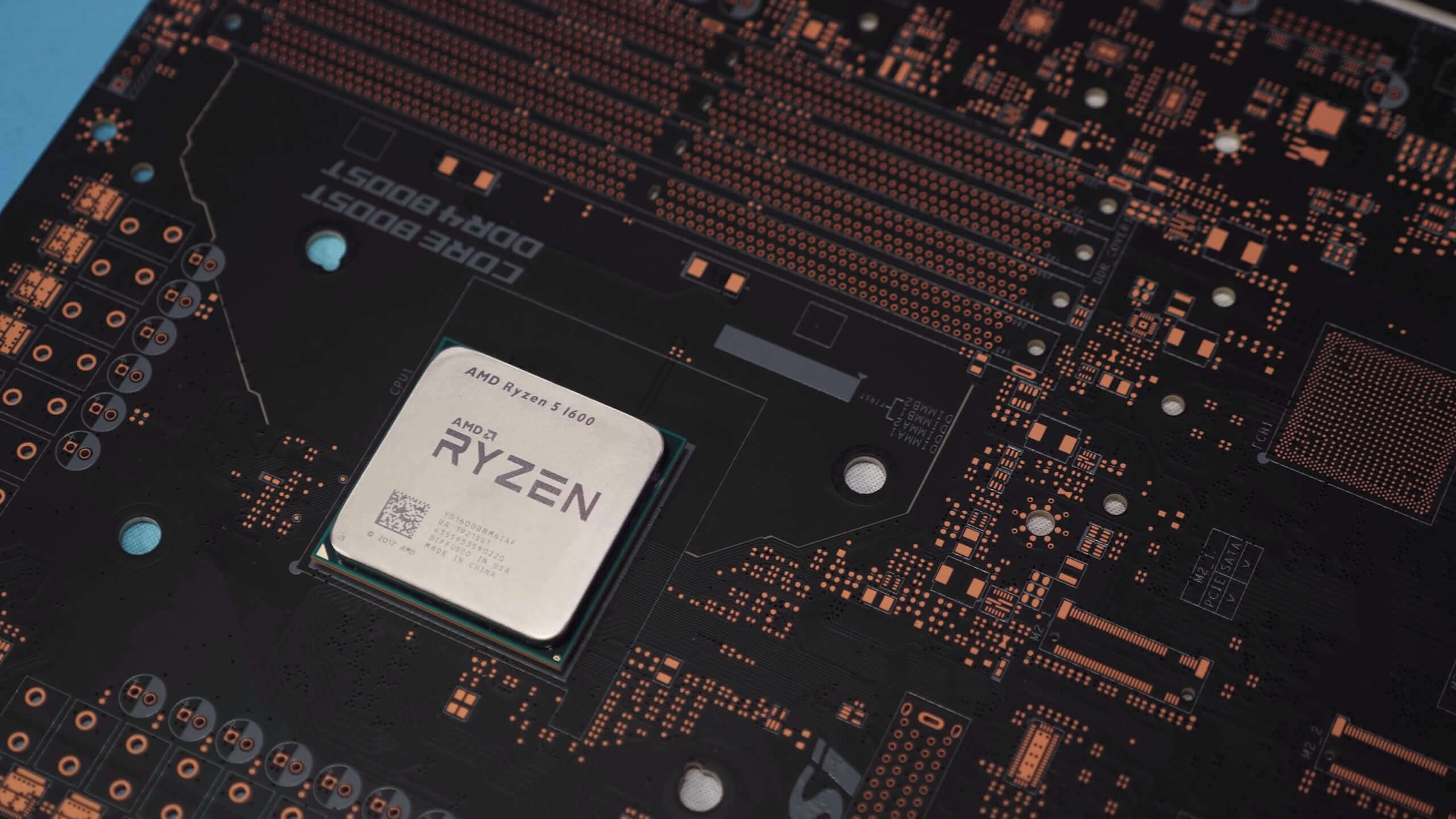Having recently reviewed the Ryzen 5 1600 AF, you should know all there is to know about this nimble CPU. How it performs, where you can buy it, what you need to support it, and so on. In short, it's an incredible value and if you're lucky enough to have it available in your region and want something for under $100, there's simply no better option, or at least that's our opinion.
However we've seen some replies claiming the Core i3-9100F is a better choice. It's also cheaper and more widely available, so there is that. It happens to be one of Intel's most popular CPUs right now as it costs just $80, so before we get into the benchmarks, let's discuss Intel's budget processor.
The Core i3-9100F is a 4-core/4-thread Coffee Lake CPU, which means it's nearly identical to an 8th, 7th and 6th-gen quad-core. It's also not overly different to a 4th-gen Haswell quad-core except for the upgrade to DDR4 memory.
Been there, done that.... as a 6th-gen part it's basically what we knew as the Core i5-6600, which retailed for $215. As a 7th-gen part it's close to the Core i5-7600, which also retailed for $215. Then for the 8th-gen series, quad-cores were rebranded for the first time as Core i3, though they didn't support Turbo Boost. The 9th-gen i3-9100F is about the same as an i3-8100 but with Turbo enabled, supporting up to 4.2 GHz for single core workloads.
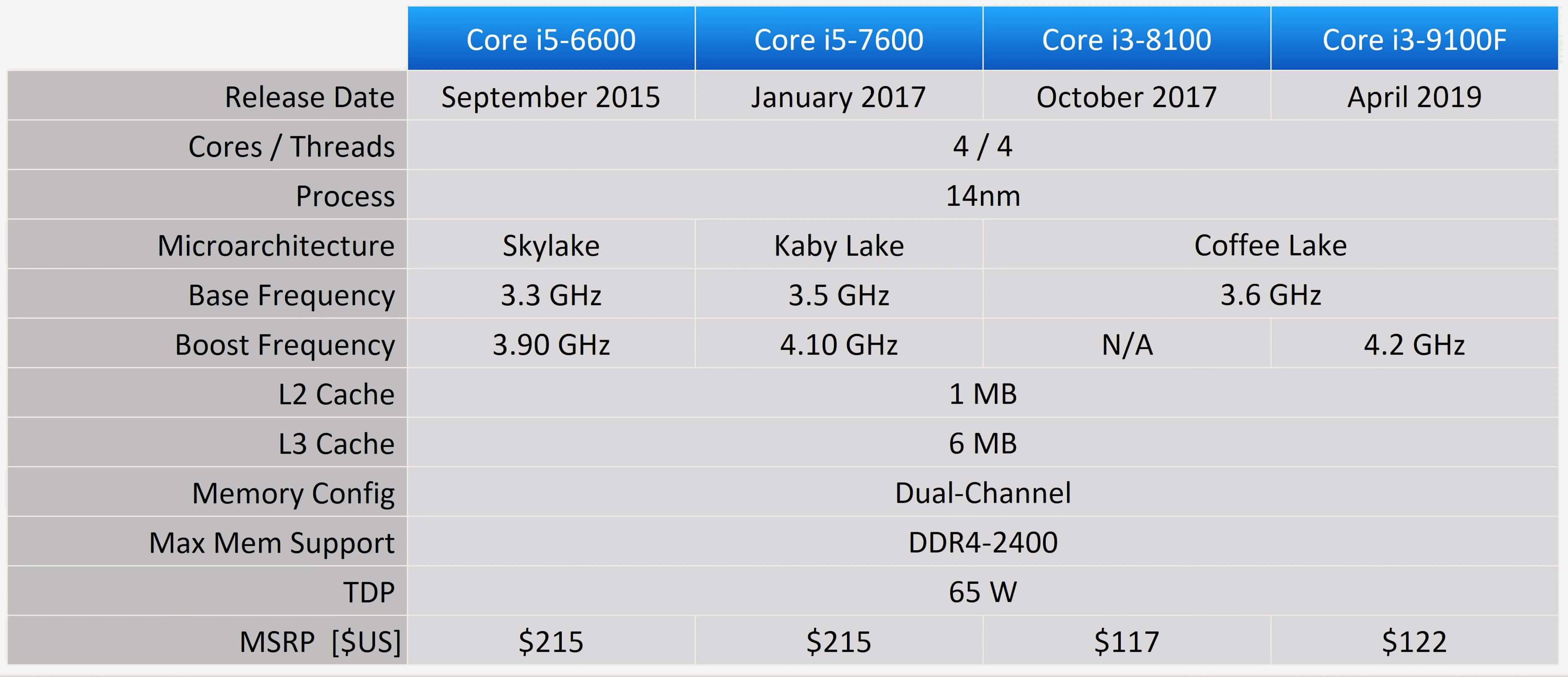
Taking this into consideration, the 9100F is more like a Core i5-7600K as it also boosted to 4.2 GHz, though it featured a higher base clock at 3.8 GHz, whereas the Core i3-9100F can drop as low as 3.6 GHz. Going through the specs as we just did, it seems clear there's going to be very little delta when comparing the 7600K and 9100F at least out of the box. The older Core i5 does get overclocking as a 'K' part, whereas the 9100F is locked regardless of the chipset used. Only with a Z-series motherboard the Core i3 processor does support memory overclocking.
This begs the question, why were Intel fans claiming the 9100F would dust the 1600 AF, when in that very review we included Core i5-7600K results? Whatever the case, today we're putting them head to head in an effort to determine which budget CPU you should invest in.
Let's jump into the blue bar graphs and do our thing. For testing the i3-9100F we used a Gigabyte Z390 Aorus Ultra equipped with DDR4-3200 CL14 memory. The same memory was used for all other processors, as well as an RTX 2080 Ti graphics card to reduce potential GPU bottlenecks. This allows us to look at the CPU performance, rather than the GPU performance as this isn't a mid-range GPU review...
Benchmark Time
Right off the bat we have Cinebench R20 multi results, and the margins you see here will translate to any application that can utilize 6 cores or more: basically any video editing tool, 3D rendering application, code compiler, and so on.
These are also things budding creators will 100% want to do with a budget processor such as the Ryzen 5 1600 AF. These aren't just general purpose processors for word processing, web browsing and emails, though given the results here the Core i3-9100F may be better suited for such a use case.
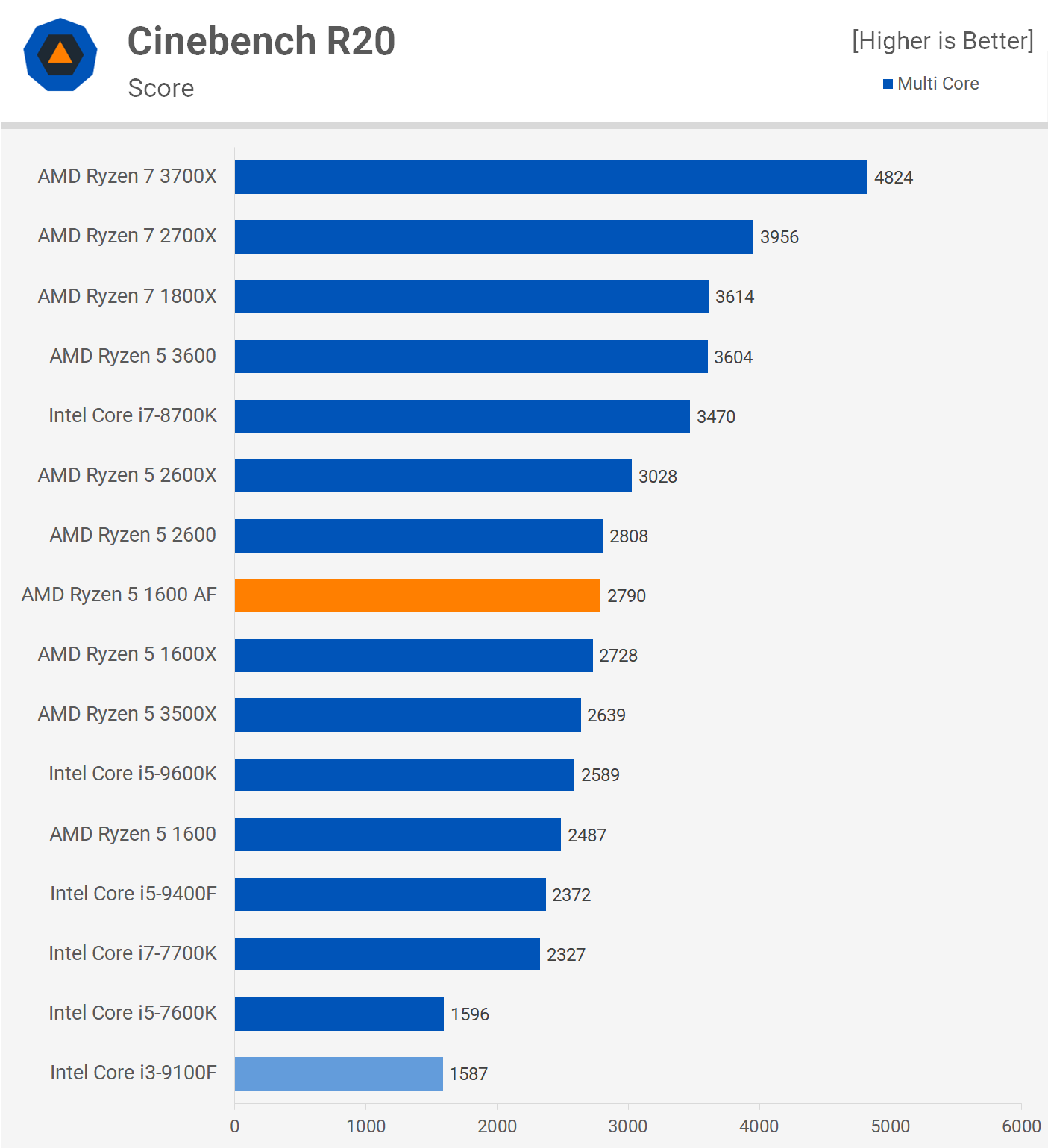
The 1600 AF was 76% faster in Cinebench R20, thanks to the fact that it packs 2 extra cores with SMT support for three times as many threads. Also as expected, the 9100F is very similar to the Core i5-7600K with nearly identical results in this test.
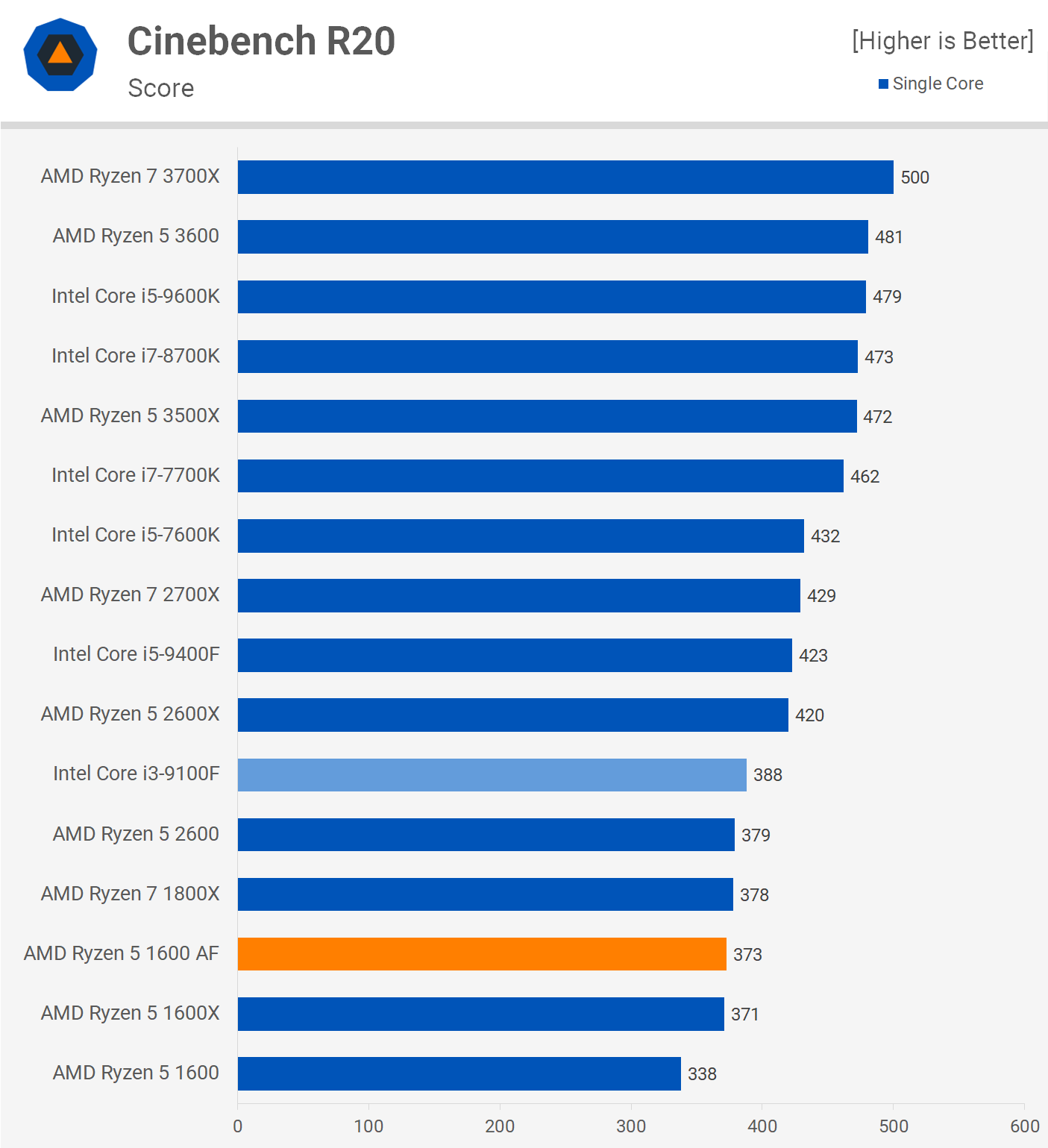
The 9100F does enjoy single-core clock speed advantage, whereas the 1600 AF will only clock as high as 3.6 GHz, the 9100F boosts 17% higher to 4.2 GHz. Despite that significant clock speed advantage, due to 2nd-gen Ryzen's strong IPC performance, the 9100F is just 4% faster than the 1600 AF when using a single core, in a workload that's not particularly memory sensitive.
The 1600 AF is also an unlocked part and with a cheap $20 tower cooler it can be typically overclocked to around 4.2 GHz, so about a 15% increase in clock speed over the out of the box spec.
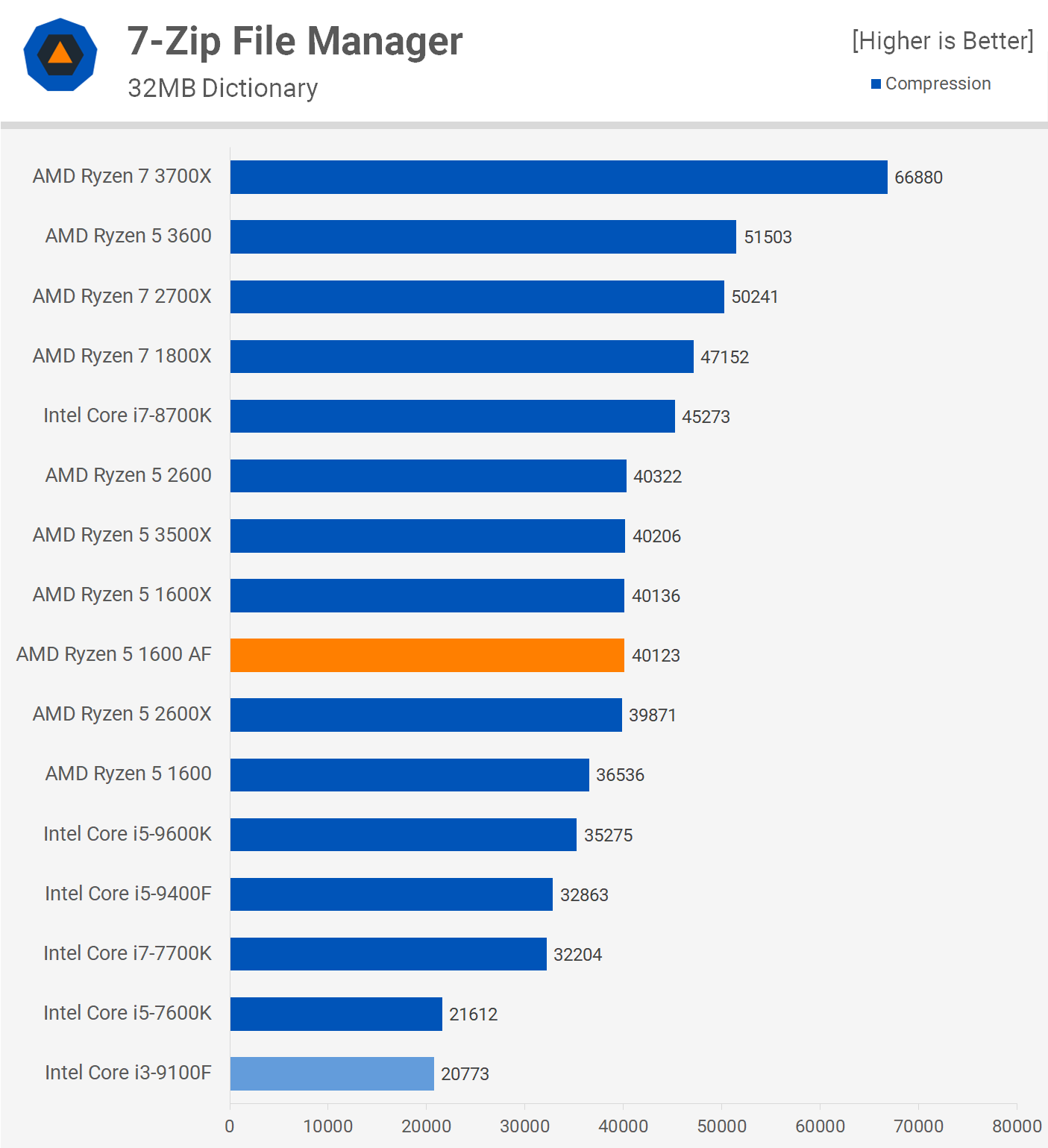
Taking a look at performance in 7-zip we see that the 1600 AF is almost twice as fast as the 9100F for compression work, here it was a whopping 93% faster. In fact, the Ryzen processor was just 11% slower than the Core i7-8700K and in a completely different league to the Core i3 model.
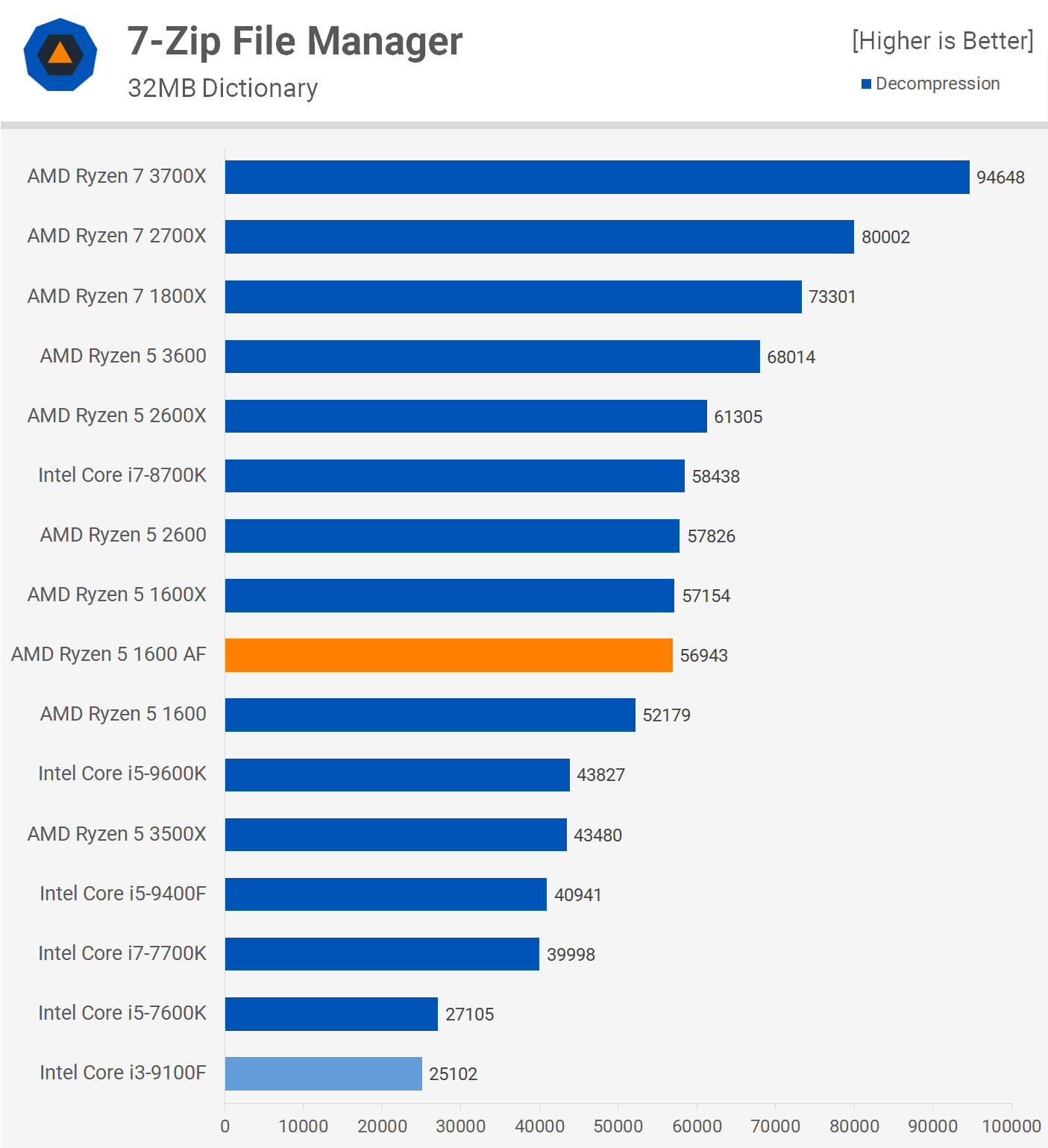
When it comes to decompression work that figure is blown out to a massive 127% margin, making the Ryzen CPU worlds faster than the 9100F and just 3% slower than the 8700K.

It's total annihilation in Blender as well. Here the 1600 AF was 85% faster than the 9100F. Again it makes more sense, at least in terms of performance, to compare the Ryzen 5 part with the Core i7-8700K, as it was just 13% slower in this test.

The 9100F has the advantage of using less power, but when comparing total system usage, it's actually worse in terms of performance per watt. Here the 1600 AF consumed 50% more power, but it was 85% faster, so significantly more efficient and that's largely due to it's SMT support.
Gaming Benchmarks
For playing games on a budget CPU, first up we have Assassin's Creed: Odyssey. This game punishes quad-cores and as you'd expect, the 9100F fairs no better than the 7600K. Granted we're still looking at playable performance with the quad-cores, but frame stuttering will be much more apparent with these CPUs.
The 1600 AF on the other hand is silky smooth with 1% lows of around 60 fps and an average frame rate of 77 fps, making the Ryzen processors 24% faster than the Core i3.


Battlefield V is even more demanding that Assassin's Creed: Odyssey and here frame stuttering is a massive problem with the quad-core chip. There is a 137% performance disparity between the 1% low and average frame rate with the 9100F, while we only see a 38% disparity with the 1600 AF.
The Ryzen 5 part was 9% faster when comparing the average frame rate, but a massive 86% faster when looking at the 1% low results.

Shadow of the Tomb Raider is another modern CPU demanding title and here the 1600 AF was up to 28% faster.
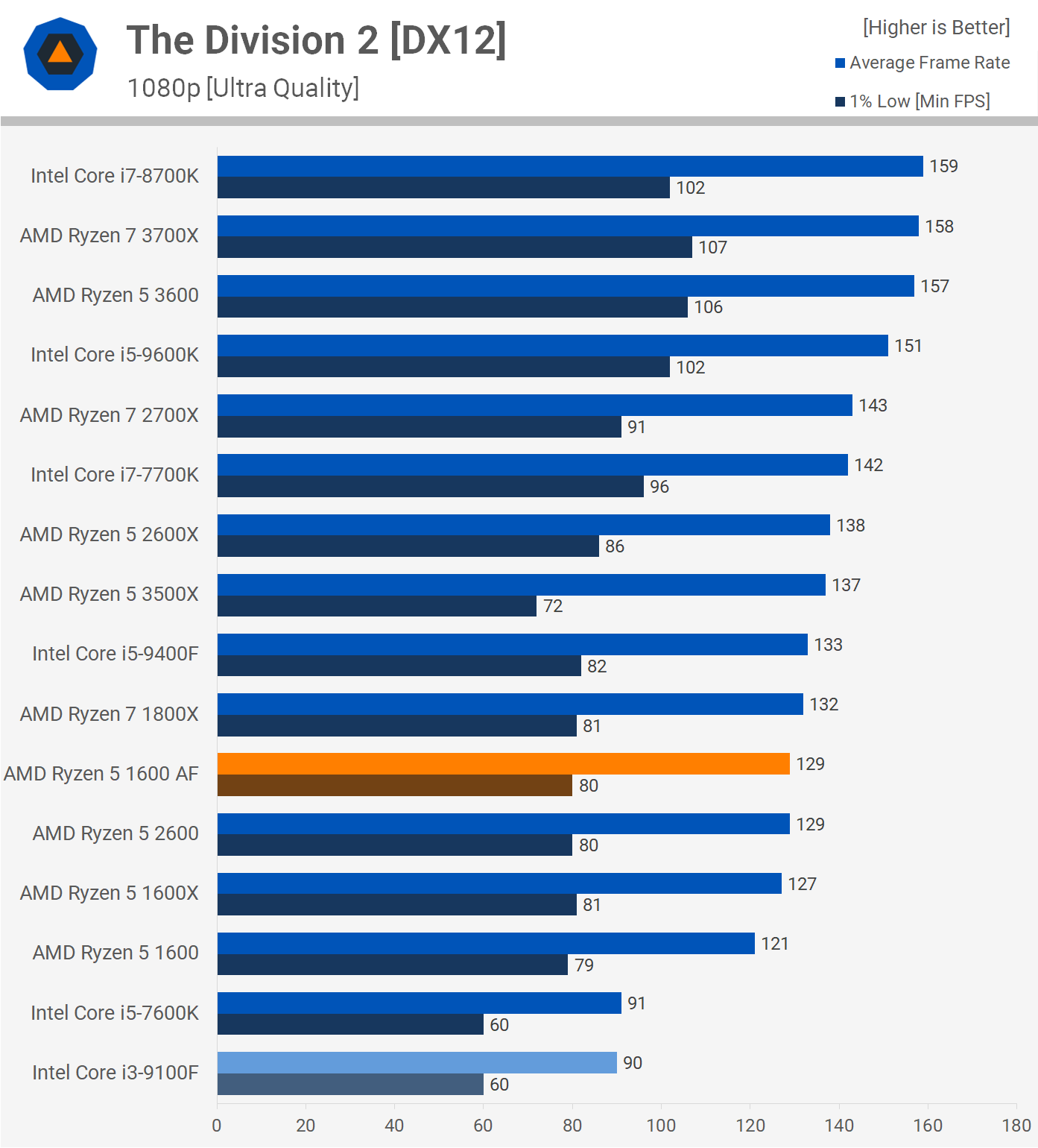
The Division 2 is an ever CPU demanding title and here the 1600 AF was 43% faster than the 9100F when comparing the average frame rate and 33% faster for the 1% low result.

Far Cry New Dawn isn't a CPU demanding game, at least not in the sense that it utilizes core heavy CPUs very well. However, we include this title deliberately as it's a good example of how some older titles behave with modern processors.
It's also important to note that while the 9100F is 14% faster than the 1600 AF, the Ryzen 5 processor still allowed for over 60 fps at all times and didn't suffer from poor frame time performance, the game played very smoothly.

Hitman 2 typically isn't a great title for Ryzen CPUs, the 3rd gen Ryzen 7 3700X falls short of even the Core i7-7700K for example. However, this title also requires more than 4 threads. In the case of the 7700K it skates by thanks to Hyper-Threading support. The 7600K though struggles and it's the exact same story with the 9100F, the game is still playable and relatively smooth, but the 1600 AF does have a clear advantage here.

Finally we have the Total War: Three Kingdoms results and again, the 1600 AF edged out the 9100F, this time allowing for 10% more frames on average and a 23% improvement in 1% low performance.
Wrap Up
We don't think this comparison calls for any further analysis. It's evidently clear that if you want to build a budget gaming PC, investing in a quad core to save even $50 is not worth it. You will have to deal with frame stuttering in a number of more demanding titles, old and new.
The quad-core Core i3-9100F was hopeless in Battlefield V, pretty bad in Assassin's Creed: Odyssey, fairly useless in The Division 2, and weak in Shadow of the Tomb Raider. When playing older or less demanding titles such as Far Cry New Dawn, the Core i3 did well, but so will the 1600 AF or any other hexa-core or better Ryzen processor.
We're not far from reaching a point where quad cores will be unusable for serious gaming, so investing in one today to save a small amount of money is plain silly. For US-based shoppers, the Ryzen 1600 AF effectively eliminates the Core i3-9100F as both come in at about $85. Your mileage will vary in other regions where the 1600 AF may not be as inexpensive or may be entirely unavailable.
Where you can't get the 1600 AF, the next best thing is the Ryzen 5 2600 at $120. That's a hefty 41% increase in price though. Alternatively, you will get a similar experience to that of the 9100F with the Ryzen 3 3200G for $94. That's a mere $11 increase for a CPU with a decent iGPU and it's on a platform that currently supports up to a 16-core/32-thread processor, giving you an amazing path for upgrades years later.
